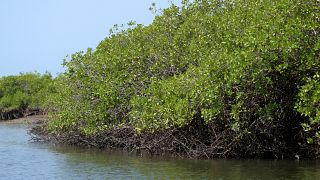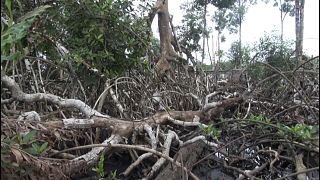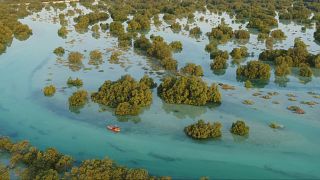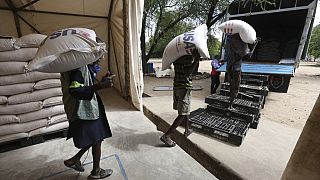Kenya
Mangrove is the star of the Kenyan Gazi Bay.
The forest located in the South of the country is a blue carbon ecosystem. Meaning that it captures and stores huge amounts of carbon.
Local residents manage two hundred ninety 290 acres of forest to earn a living.
Some like Juma belong to the Mikiko Pamoja group. The collective, which means ‘mangrove together’ in Swahili plants seedlings. The work earns them 'carbon credits' which are awarded for each ton of greenhouse gas emissions removed from the atmosphere. Selling these credits on has earned them 3 million Kenyan shillings (around 25,500 US dollars) this year. The sum helps them cover their needs.
"We have benefited through water projects and therefore we don't have to travel long distances in search of water anymore, member Juma tells. We now have fresh water taps in our houses for which we pay lower charges that cater for the electricity cost only."
Mitigate climate shocks
The magnificent scenery in which the Gazi Bay resident live is under threat from climate shocks or logging. Planting seedlings is therefore a way to resist. It helps protect land from coastal erosion and loss of fish. It motivated the group to start operations in 2013. The benefits go further than just what they can buy, according to Abdalla Bakari, a member of the collective, the air quality has improved: "The mangrove forest is thriving and the air has become cleaner for the villages that are close to the forests. The mangrove forests also provide a breeding ground for fish and for the past 10 years, we have noticed an increase in the number of fish unlike in the previous years."
The positive impact of the work has inspired a growing number of residents. The project receives technical support from Kenya Marine and Research Institute. Kenya's mangrove cover dropped from 60,000 hectares in 2017 to 52,800 hectares in 2021. But through government and community work, the habitat is recovering.
"Today we have seen that we have a lot of the community being involved because they are the custodians, Stanley Nadir, a researcher at Kenya Forestry Research Institute explains. They have indigenous knowledge. They live around these mangroves and therefore they are the first beneficiaries of mangroves. If there is a loss in mangroves, their livelihoods are affected."
Research has shown that coastal ecosystems store more carbon than terrestrial forests. The Mikiko Pamoja group plant 4,000 trees annually. Mangroves account for 10% of Kenya's total forest cover.












01:17
UNESCO inscribes 26 new sites on World Heritage list
01:07
Only 35% of sustainable development goals on track to meet target, UN says
01:01
Kenya: Visa-free travel now available for many African and Caribbean countries
01:26
Brazil elephant sanctuary welcomes its newest resident, rescued from a zoo in Argentina
00:22
Boniface Kariuki, a Kenyan mask vendor shot at close range laid to rest
11:17
Bridging the legal gap in Africa’s digital boom {Business Africa}